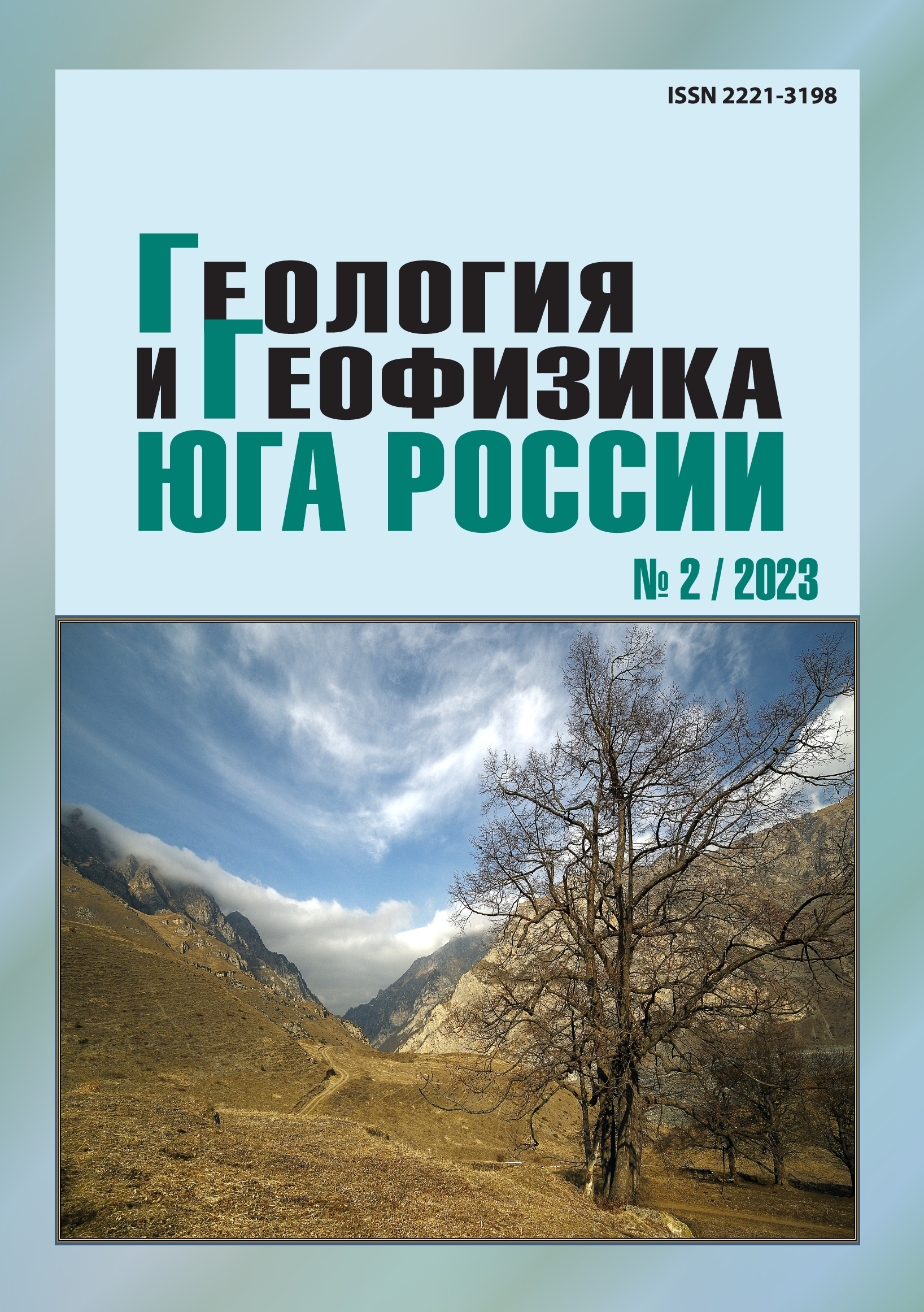On estimates of vibration spectra and spectral characteristics of soils for probabilistic seismic hazard analysis of territories
Abstract
Relevance. In connection with the emergence of new data on the significant variability of integral (cumulative) estimates of the macroseismic intensity of shaking of soils of different seismic properties obtained for the territory of RNO–Alania, similar quantitative estimates of other seismic impact characteristics that are important from scientific and practical points of view are considered for the same area – vibration spectra of “soft” and “hard” soils and the relationships between them. The aim. The study of absolute and relative estimates of the integral spectra of soil vibrations with different seismic properties for probabilistic forecasting of the seismic hazard of the RNO–Alania territory. Methods. The main element of the work is a probabilistic seismic hazard analysis (PSHA) of several “representative” sites of the RNO–Alania territory, performed in terms of the integral probable Fourier spectra and the response spectra of vibrations for “soft” and “hard” soils, as well as the ratios between them – spectral characteristics. The final distribution function was calculated separately for each of the 18 spectral components in the frequency range of 0.28–22 Hz. The calculations were carried out on the basis of the total probability formula, where the conditional probability reflects the random nature of ground vibrations during the occurrence of earthquakes, and the unconditional one reflects the uncertainty in the occurrence of these earthquakes. Previously developed models of local seismicity (models of PSS zones, recurrence of earthquakes in time, etc.) and models of strong motions (probability functions of the Fourier spectrum attenuation of “soft” and “hard” soils) were used. The integral reaction spectra were calculated from the integral Fourier spectra using the relationship between spectral accelerations and the Fourier energy spectral density. Results. For each “representative” site, integral Fourier spectra and response spectra of vibrations for “soft” and “hard” soils during earthquakes with average return periods of 500, 1000, 2500 and 5000 years have been developed. According to the ratios of these spectra, the integral spectral characteristics of vibrations of “soft” soils in relation to “hard” soils are determined. A comparative analysis of the obtained spectra and spectral characteristics is carried out. It is shown that the obtained spectral characteristics are subject to significant (up to 45%) fluctuations both in terms of the location of the calculated site and depending on the average recurrence period of the calculated earthquakes, which indicates the need to take this circumstance into account in research and practical work. The established fluctuations of the spectra and spectral characteristics are generally similar to the variability of the integral macroseismic intense shaking and intensity increments identified earlier for this territory. But there are also differences. This makes direct transitions, for example, from estimations of intensity increments to spectral characteristics, fraught with significant errors. This should also be kept in mind when conducting PSHA–type assessments. The results obtained so far are interpreted as relating only to the territory of RNO–Alania. How applicable they are to other areas remains to be seen in the future.


